
Even as HR teams increasingly use technology to work smarter and improve their processes, we suspected that many are still doing their job descriptions the same old way: through inefficient, time-consuming processes. But we wanted to drill down and look at the hard data: how much time are people spending on job descriptions? Who leads the process? And how do HR professionals feel about their existing process?
This report is compiled to provide insights on what other organization's processes look like, so you can compare and contrast it with your own. Interested parties could include HR managers, generalists, directors or VPs; hiring or departmental managers; C-Suite personnel; or anyone who has an interest in the talent management processes that keep organizations ticking along.
Let’s get into the data.
Format: choose as many responses as you'd like
.png?width=517&name=1-why%20(1).png)
Let’s start with the basics: what's driving the creation of job descriptions?
KEY TAKEAWAY: Internal change is the main driver of job description creation: either hiring for positions, or changes in a person’s role within the organization. But organizational concerns like compliance and pay equity also drive the creation of job descriptions for over 40% of organizations. 13% of our respondents have a regular cadence to review and update their company's job descriptions.
.png?width=517&name=2-percentage%20(1).png)
Last year, we asked this as a simple ‘yes/no’ question (“does every job in your organization have a job description?”) and were surprised to find that 37% of respondents answered “no”. So we wanted to zoom in this year to see what job description coverage really looks like.
KEY TAKEAWAYS: Turns out, that coverage is all over the map. 35% of our respondents said that less than half of their organization’s jobs have descriptions attached to them. And over 60% of our respondents said that at least a quarter of their company's jobs lack proper descriptions.
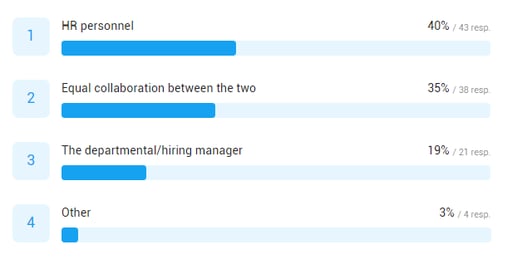
New on our survey this year, we were very interested to see the responses on this question. HR personnel generally lead the way on job description creation – but as you can see, that’s certainly not always the case.
KEY TAKEAWAYS: In most cases, managers probably know their requirements best, so it makes sense that they’re heavily involved. Something to chew on: how effective is the collaboration process between HR and departmental managers? Do you have systems and tools in your organization to support that?
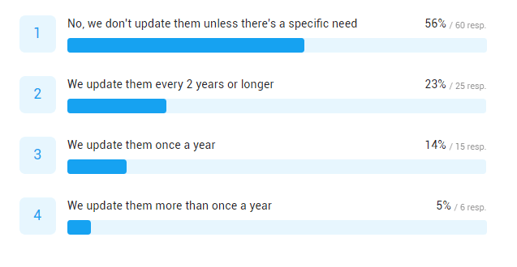
The world sure has changed in 2020, and it stands to reason that a lot of jobs have, too. Despite that, many organizations are behind the 8-ball with their job descriptions. 57% of our respondents told us that they don’t update their job descriptions unless there’s a vacancy.
KEY TAKEAWAYS: We know that with all that’s gone on this year, job descriptions might have taken a back seat in terms of prioritization; but given that we're now working in a radically different world, do your organization's job descriptions reflect the new reality?
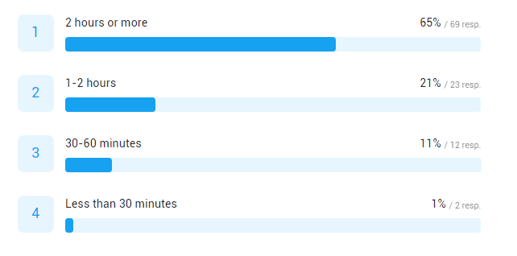
Creating new job descriptions can be quite the time-consuming task. For most people, there’s consultation with hiring managers, finding responsibilities and skills, probably some Googling to see what others are doing, etc. Most of our respondents said that it took 2 hours or more for each and every job description. For organizations with significant hiring requirements, it's easy to envision how all that time adds up.
KEY TAKEAWAYS: Process is important. So are tools to manage that process. Having those two things in place can significantly reduce the time you spend on job descriptions without sacrificing quality.
Format: choose as many responses as you'd like
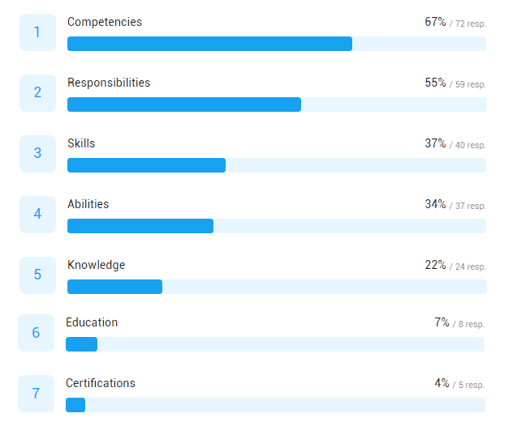
Here’s where a fair amount of that time is spent: trying to find or create the lists that make up the individual sections of a job description.
KEY TAKEAWAY: Competencies, whether they’re broader behaviors or job-specific skills, are tough to pin down for those without the right content and/or internal knowledge on-hand. And no surprise, responsibilities are difficult to come up with as well if the job is not very well-defined. The challenge in coming up with accurate content is a common theme throughout some of the responses we received, as we’ll see in our next question…
Format: choose your top 3 responses
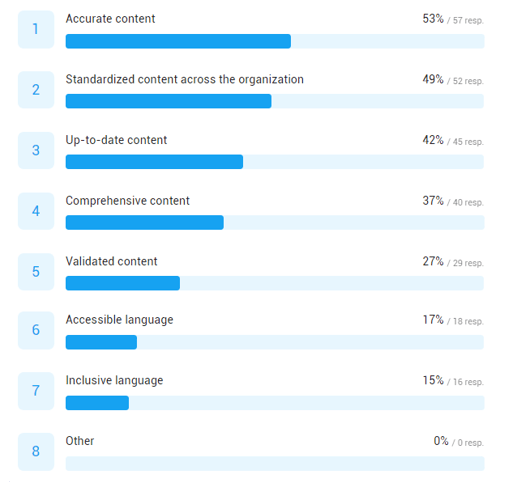
For this question, we were eager to see how our respondents defined “quality” of job descriptions. Respondents could choose up to 3 answers. Accuracy of the content narrowly edged out standardized content (i.e. consistently-written across the organization) for top spot.
KEY TAKEAWAYS:We were a bit surprised that items around inclusivity and accessibility didn’t rank higher, but keep in mind that our respondents are from all over the globe; those items may have been higher through polling North America exclusively.
Format: choose as many responses as you'd like
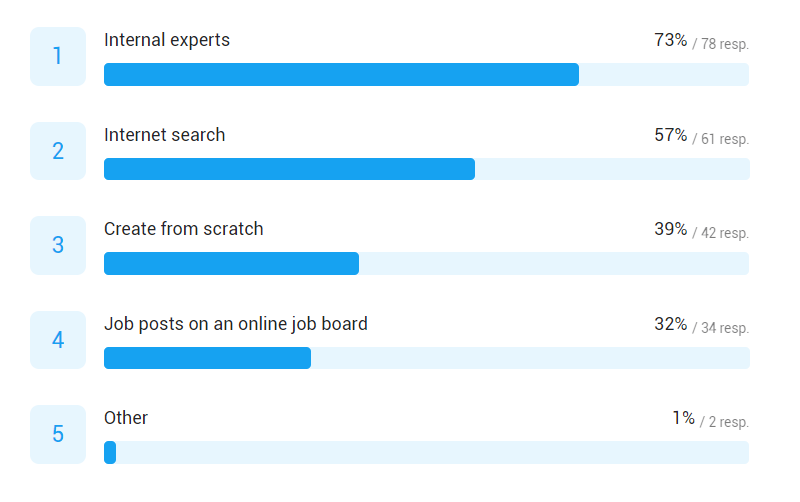
You’re not pulling job description material out of thin air, so where does it come from? Most commonly, according to our results, it comes from conferring with internal experts (and we’re going to go a step further and say that most often means the hiring manager.) But between looking at other company’s job posts, and Googling around online, it seems that there’s a lot of recycling going on as well.
KEY TAKEAWAYS: Once again, it's a mixed bag in terms of how people create job descriptions. If you’re in a small organization, and you’ve got a process that works well for you, then you're probably all set. In mid-sized and larger organizations though, inconsistencies are bound to creep into the process. We know from one of our earlier questions that it’s often the hiring manager leading the process. Do you have faith that they’ll be able to create accurate, standardized, and non-plagiarized job description content within your current process?
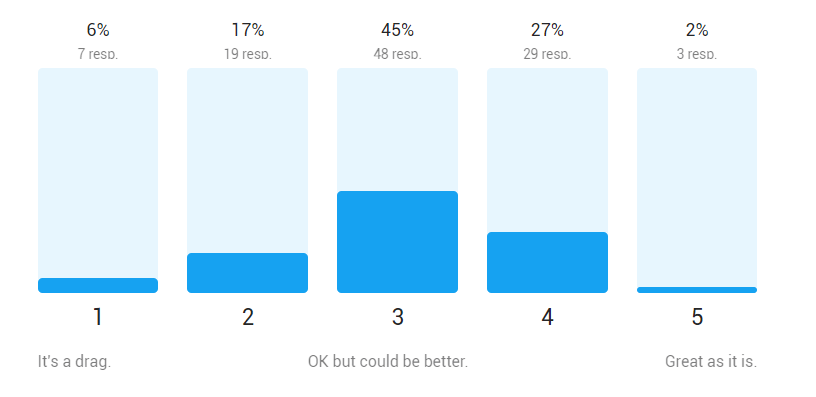
Here's a simple question to wrap it up. We asked respondents to reflect on their own job description process, and give it a ranking on a scale of 1 (it's a drag) to 5 (it's great as it is.)
KEY TAKEAWAYS: If this report got you thinking about your own job description process, and how it could be improved, you're not alone. 68% of our respondents said that their job description process could use improvement. If you're in that boat, we can help. 👇
How to build better job descriptions, faster.
Without the pain.

Over 60% of professionals spend 2+ hours on every job description.
68% say their job description process could use improvement.
It's time to #WorkSmarter.
That's why today's smartest HR teams are upgrading their job description creation + management process with CompetencyCore by HRSG.
The smart way to create and manage your job descriptions:
❌ Spending hours on research and meetings with hiring managers.
❌ Trying to find the most accurate responsibilities, skills and abilities.
❌ Job data scattered between Word files, shared drives, HRIS and ATS.
❌ No consistency between different departments.
Job descriptions can be a pain... but with CompetencyCore by HRSG, they don't have to be.
See why our clients are telling us, "this is awesome!" ✔️